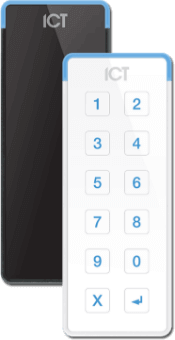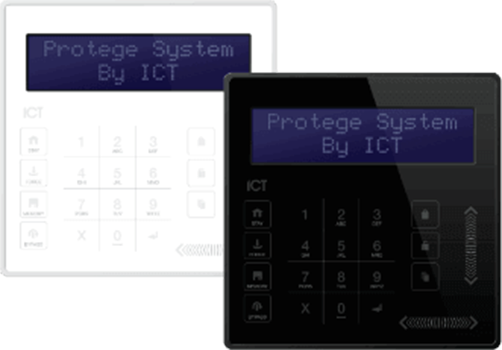Video MGMT System
 Access Control
Access Control
Voice & Data Wiring
 Burglar Alarm
Burglar Alarm
 Fire Alarm
Fire Alarm
Video MGMT System
Voice & Data Wiring
THOUGHT CENTER > Blog > Access Controls
November 10, 2023
Too busy to read? Here’s a summary:
What’s MAC? Well, we aren’t talking about Apple computers.
Today, we're exploring the realm of mandatory access control (MAC) policies for entry management and barrier security.
According to a recent study from Forbes, nearly 60% of employees still work in the office full-time. And because that number is expected to increase in coming years, business access control protocols like MAC are as important as ever.
Ready to jump in? Let's go!
Like all electronic access control protocols, MAC systems automate entry processes to facilities based on predefined criteria.
MAC systems restrict access based on preset site authorizations created and managed by a central authority.
This is in contrast to other access control policies, such as DAC (Discretionary Access Control) and RBAC (Role-based Access Control). DAC systems restrict user access privileges based on the discretion of an administrator, and RBAC systems limiting access based on a person’s role or job function.
At its heart, MAC is all about mandatory restrictions. Unlike models where local administrators can adjust access permissions, MAC permissions are set and enforced by a central authority.
This ensures a consistent and stringent security protocol that's not easily bypassed or altered.
When applied to physical barriers, MAC operates on a system of credentials and classifications. Here's a simple breakdown:
Credentials: Every individual in an organization is provided with a unique credential. This could be a smart card, a biometric scan, or even a mobile-based access system.
Classifications: Different areas within a facility are classified based on their security needs. For instance, a server room might be classified as “High Security,” while a general meeting room might be “Low Security.”
In such circumstances, only credential holders granted a high-security clearance level—such as top-level IT personnel—would be able to access the server room. Access to general meeting rooms, on the other hand, would be available to those with high- and low-security clearances alike.
Access Matrix: This is where the magic happens. An access matrix is created that defines which credentials can access which classifications. For example, only top-level IT personnel might be granted access to the 'High Security' server room.
MAC is best suited for large businesses and organizations, especially those with high-security requirements. Here's why:
Complex Security Needs: Large businesses often have more complex security needs due to the size of their operations, the number of employees, and the variety of roles and responsibilities. MAC allows for fine-grained control based on predefined security attributes.
Regulatory Compliance: Many large organizations operate in sectors that have strict regulatory compliance requirements (e.g., finance, healthcare, and defense). MAC systems ensure these organizations meet these requirements by strictly enforcing access rules.
Multiple Locations: Large businesses often have multiple locations or facilities. MAC systems can be centralized, making it easier to manage access across various sites from a single point.
Cost-Effective for Large Scale: While the initial setup and configuration of a MAC system can be complex and costly, it becomes cost-effective for large organizations that require robust security measures. The investment pays off fast by preventing security breaches and automating compliance protocols.
Dynamic Environment: In large organizations, the roles and responsibilities of employees can change frequently. MAC allows for dynamic adjustments to access permissions based on changing roles or security levels.
Here's why Mandatory Access Control for physical barriers is a game-changer:
Tailored Access: Whether it's a research lab, a stockroom, or the executive suite, MAC ensures that only authorized individuals can enter.
Enhanced Security: By controlling physical access, you're significantly reducing the risk of theft, vandalism, and unauthorized entry.
Operational Efficiency: Streamline the flow of employees and visitors, ensuring smooth operations without compromising security.
Audit and Reporting: Large organizations often need detailed audit trails and reporting for security incidents or compliance purposes. MAC systems provide detailed logs of access attempts, enabling organizations to review and analyze security events.
Ready to fortify your premises with MAC Access Control? Here are some golden nuggets to consider:
Site Assessment: Before diving in, assess your premises. Understand which areas need stringent access control and which can have relaxed criteria.
Regularly Update Access Credentials: Roles change, and so should access privileges. Ensure credentials are updated regularly.
Educate Your Staff: A system is only as good as its users. Train your team on the importance of physical access control and its proper usage.
Considering a security overhaul? Look no further than Mammoth Security, Connecticut’s one-stop shop for top-notch commercial-grade security system selection, installation, and programming.
Whether you need video surveillance, fire safety, intrusion detection, access control, or structured cabling, our team at Mammoth has the expertise you need.
So don't wait!
Click to contact us and fill out the form for a 100% free site survey and consultation with an expert from our team.
NOT COMPLETELY SURE?
860-748-4292In security systems, Mandatory Access Control (MAC) automates entry processes to facilities based on predefined criteria so that only authorized personnel can access specific areas.
MAC differs from other access control systems in that it restricts access based on preset site authorizations strictly managed by a central authority.
MAC Access Control is essential for large businesses because of their complex security needs, regulatory compliance requirements, and the presence of multiple locations, offering fine-grained control and centralized management.
The core components of a MAC system include unique credentials for individuals, classifications for different areas within a facility based on security levels, and an access matrix that defines which credentials can access which classifications.
The benefits of using MAC for physical access control include tailored access, enhanced security, operational efficiency, and detailed audit trails and reporting for security incidents or compliance purposes.
MAC is considered cost-effective for large-scale businesses because, despite the initial setup and configuration costs, it offers robust security measures that prevent breaches and automate compliance protocols, providing long-term value.